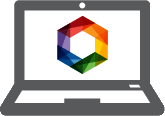LEARN MORE
Frequently Asked Questions
Online testing and reports
How long does it take to complete the online version of the Self-Directed Search?
Is my personal information secure?
Are my results confidential?
How secure is my credit card information?
What do I do if I experience any technical problem with the site?
How can I arrange to have a group or class take the SDS?
What are career clusters?
What is the SDS Report?
Is the SDS Report compatible with accessibility software?
Other SDS formats
Is there a paper-and-pencil version?
Is the SDS available on PARiConnect?
Is the SDS available in other languages?
General SDS information
What is the qualification level for the SDS? Is any special training required to use it?
What ages can the SDS be used with?
What is the reading level of the items?
What is RIASEC?
Is it possible to get a code that doesn’t correspond with any job options?
People with rare or uncommon codes may display combinations of traits and personality characteristics that are not typically associated with one another. Such combinations of interests and traits may require compromises in interests, activities, and goals as a part of educational and career planning. These individuals may also choose to focus on one high-point code in their paid employment while using other life activities to express their other code(s). For example, a person with a CS code might pursue a career in accounting, but express his or her social side by singing in a community chorus.
Several strategies can help with the interpretation of rare codes. First, the user should look at occupations using only one or two letters of the code. Second, consider the fourth letter if its scores is eight or fewer points from that of the third letter. Finally, the user should examine options using the code of their daydream occupation or the Aspirations Summary Code. The SDS Report generates these automatically.
How reliable and valid are the Summary Codes? What type of standardization sample was used?
The SDS standardization sample consisted of 1,739 individuals ranging in age from 11 to 70 years. The sample was well-matched to U.S. population parameters for gender, race/ethnicity, education, and geographic region. For more information about the reliability and validity of the SDS, visit the SDS product page.
When was the SDS developed?
The SDS was originally published in 1970 by John Holland, PhD, but has undergone five revisions since, the most recent in 2017. Note that for the most recent revision, no new data were collected, so it can be used interchangeably with the Form R, 5th Edition published in 2013.

Ready to talk about solutions?
For more information about SDS group accounts, partnership and institutional pricing, please contact sds@parinc.com, or call 1.866.727.2884.
